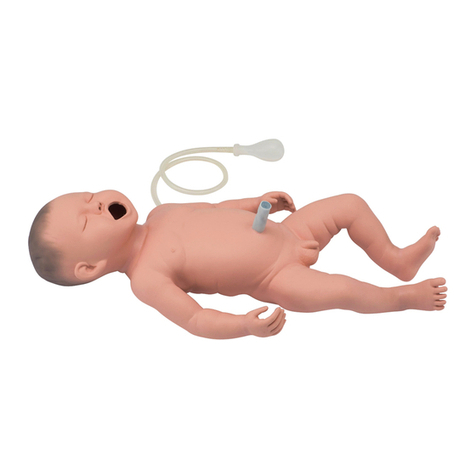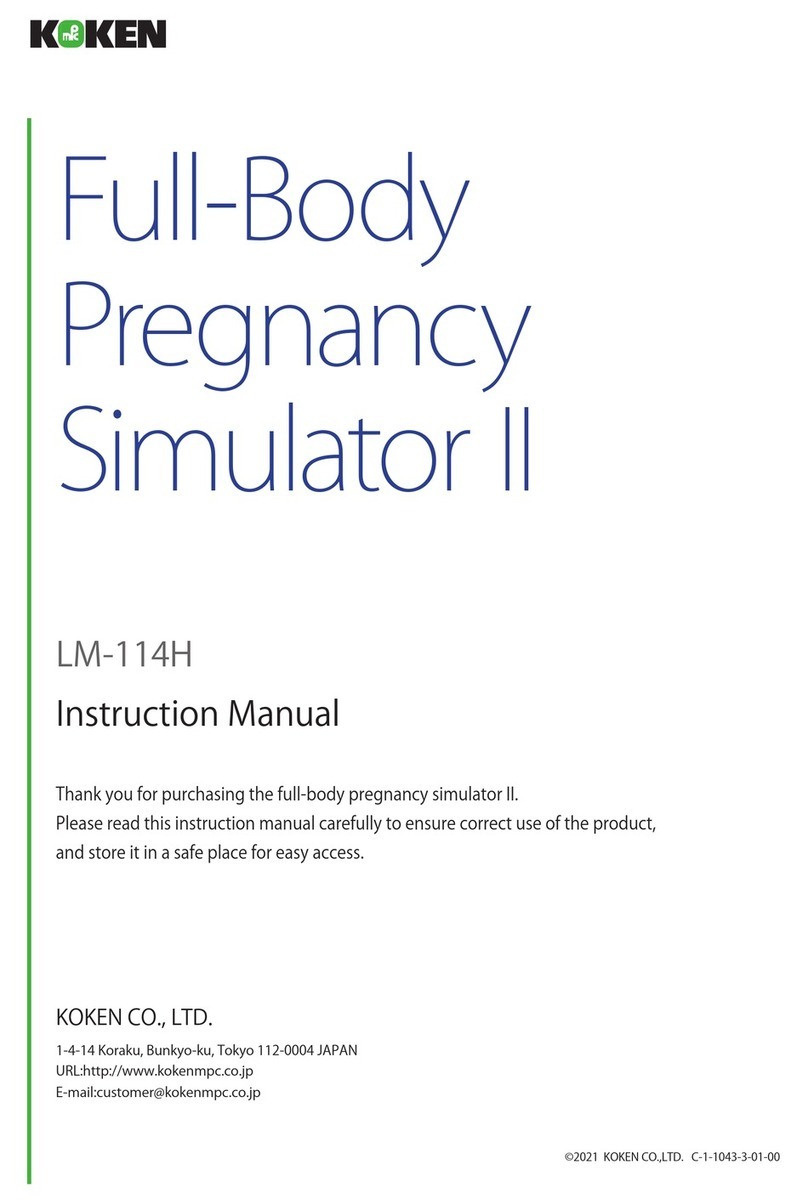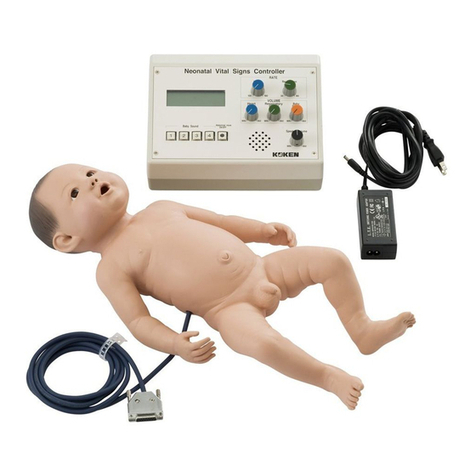
1
Handling and Safety Precautions
These precautions should be strictly observed to ensure safe, long-term use of
the product.
The following precautions should be especially adhered to:
○Regarding the LM-107C Ascending Colon for Colonoscopy/ LM-107D Descending Colon for Colonoscopy
1. This product is made with special silicone rubber to simulate the texture of human skin, and excessive
force may damage the products. So we recommend that it be handled as carefully as actual biological
material.
2. Before using this product, be sure to apply a generous amount of endoscope lubricant to the inside of it.
For details, refer to "3-1: How to apply lubricant" on page 6. An insucient amount of lubricant may cause
the endoscope to get stuck inside of the model, which could possibly break it.
3. Do not place objects on the main unit, as doing so may alter its shape.
4. Do not use thinner, benzine or other organic solvents on this product. Doing so may cause its color to
fade or deform its shape.
5. Do not use oil-based inks, pencils, chalks, or paints on this product as they may cause permanent
staining.
6. When transporting this product in its storage case, make sure the metal latches are closed. Also, if the
storage case is tilted or experiences heavy shock, the case or model may break as a result.
Optional Items (sold separately)
○ Regarding the "LM-103A Simulated Polyp (for polypectomy)":
1. Please take care to follow the directions below so as to avoid mold growth or degeneration of the
Simulated Polyp.
1-1. Please avoid storing the Simulated Polyp (for polypectomy) at a location with direct sunlight or a
high temperature and always store in a refrigerator (between 2 and 10ºC, do not freeze). If it is stored at a
temperature of over 30ºC, it may change in shape or degrade, rendering it unusable.
1-2. Please use the Simulated Polyp as early as possible after it has been unsealed. KOKEN is not
responsible for quality of Simulated Polyps that have already been unsealed.
1-3. When taking out the Simulated Polyp, please use clean tweezers etc.
1-4. If a Simulated Polyp has been taken out of the container, please do not put it back in the container.
1-5. Do not leave a Simulated Polyp (for polypectomy) out of the container for a long period of time.
The surface will become dry and hard, and it will not be possible to use it any longer.

































